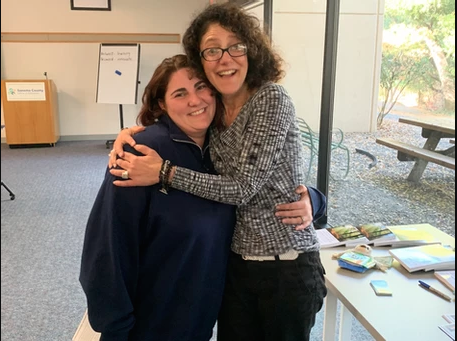Nervous System Regulation or Relationship?
By Katherine Kozioziemski, MA
If you scroll through social media these days, you’re likely to see posts from therapists and practitioners along the lines of: 3 Ways to Soothe Your Nervous System, How to Improve Your Vagal Tone, How to Stop a Panic Attack
What I don’t see are ways to foster a healthy relationship with your nervous system so you don’t have to soothe it all the time. Strengthening this relationship will help in all areas, including parenting. You can model and teach this nervous system relationship skill to your child, as well.
What is your nervous system anyway?
The nervous system is complex and dynamic, impacting every organ and muscle in your body. Your sympathetic nervous system tells you when something is threatening and it’s time to fight, flee or freeze. Your parasympathetic nervous system allows you to rest, relax, restore and digest. The two are in constant communication and work without conscious choice much of the time.
When you see the above Instagram titles, what is often being referred to is pushing the body out of sympathetic activation, or fight flight, and ushering the body into parasympathetic activation, or rest and digest. This action is commonly referred to as regulation.
What is your relationship with your nervous system and how does that differ from regulating your nervous system?
When I hear someone speak about regulating your nervous system, I always have an image of beating the nervous system into submission. When you demand the nervous system to, “Regulate! Regulate! Regulate!” It will, until it doesn’t. The undercurrent of what is happening in your body won’t go away just because you made your body more compliant to a more desirable state. When you try to cajole, manipulate or order your nervous system around, you can have short term compliance. I teach plenty of tricks for short term compliance. Sometimes we need these tricks for ourselves or our children to get through tough moments of our lives, but it’s not very sustainable for a long term relationship.
I teach my clients how to have a relationship with their nervous system and body, which means both listening and sharing. When you foster a healthy relationship with your nervous system, there is room for curiosity. Any sensations, even unpleasant ones, are allowed to be there. While you may not enjoy them, the unpleasant sensations often give you the most information about what is happening in your body.
When you honor what is happening in your nervous system, this gives you space to invite a change rather than manipulating yourself into a new state with body hacks. Fostering this relationship may look like: body scans, meditation, self care, noticing breath, touch, tears, shaking, laughter and more. Like any relationship, it requires time and attention.
This doesn’t mean I don’t utilize my bag of tricks when I have to do things like get a blood draw or my child is having a melt down. I’m grateful for all the body hacks I’ve learned to get through difficult experiences.
It does mean that thanks to my relationship with my nervous system, I don’t have to pull out a hammer every time I need a little support or need to ask my body to cooperate a bit more.
How would you describe your relationship with your nervous system?
- Connected?
- Distant?
- Clashing?
- Harmonious?
- Complicated?
What do you want in this relationship?
Ways to foster a healthy relationship:
- Spend time paying attention to what your body is saying. Discomfort is trying to tell you something. That lump in your throat wants to say something. Notice the pleasant sensations too! What does joy or amusement feel like in your body?
- Allow sensations to be there. When we feel an unpleasant or uncomfortable sensation, such as a racing heart, or the flush of anger, we often want to make it go away as soon as possible. Can you just allow some time and space for the sensation to be before making any changes? If it feels unbearable, try setting a timer for 30 seconds and simply allow it.
- Try a Body Scan. A body scan simply looks at what is happening in your body at any given moment. If you are new to body scans, I have a free downloadable guided body scan on my website at yogaandsomatics.com. With practice, you’ll be able to do short scans on your own, without guidance.
- After spending time with your nervous system, you can gently invite change and transformation. Years ago, I received the parenting advice to “connect before you redirect” your children. The same is true for your nervous system. Connect before you redirect.
Lastly, notice how this shows up in your parenting.
Fostering a healthy relationship with your own nervous system is the best way to model this for your children. Children, especially ones who have experienced trauma, are highly attuned to grown up’s nervous systems. Just as you want to foster a healthy relationship with your nervous system, teaching your children to do the same is a lifelong skill.
If you need support fostering a healthier relationship with your nervous system, I’d be honored to invite you to join me for a free Alleviate Anxiety Already Session.
Expert Bio: Katherine Kozioziemski is a yoga & somatic practitioner who specializes in helping overwhelmed moms dial down stress and anxiety. She’s been practicing and teaching yoga and mindfulness for over 20 years with over 3,000 teaching hours and holds her MA in Spirituality from Santa Clara University. Katherine is passionate about teaching others the power of their breath, mindfulness and movement to alleviate stress, overwhelm and anxiety so they can live happier and healthier lives in mind, body and spirit. You can find her at www.yogaandsomatics.com.









